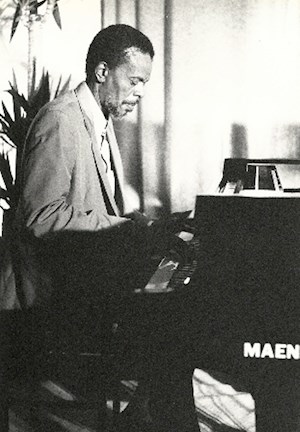Horace was born in Houston, Texas in 1934. His musical family included Mary Malone Tapscott who was a professional singer and pianist. The family moved to Los Angeles when Horace was nine years old. Horace grew up in the 1940’s and was exposed to the sounds of Central Avenue as a teenager. Coleman Hawkins (Dexter Gordon), Art Tatum and Charlie Parker were just a few of the many cats that made the set. Horace began taking music lessons from Lloyd Reese and Dr. Samuel R. Browne around this time. Other students included Frank Morgan and Eric Dolphy. Horace studied music, including trombone and piano. Horace graduated from Jefferson High in 1952 and married Cecilia Payne. He then joined the Air Force. While he was in Wyoming, Horace joined an Air Force Band. After a few months of hard work, he returned home to Los Angeles and worked various gigs before he was hired as a trombonist in the Lionel Hampton Big Band. Horace finally made it to New York with the Hampton Big Band in 1959. Eric Dolphy, his friend, introduced him to John Coltrane. Horace left after a difficult winter and a lackluster number of gigs. He also spent too many nights on the dance floor at a friend’s gallery. Horace returned to sunny Southern California where he was able to enjoy a happy life with his wife and their family. Horace emerged as an Avant Garde leader in the sixties. Horace gained public attention playing in his own band, which included bassist David Bryant and Everett Brown II. Horace was also featured on the first record (see discography). Horace was openly vocal about racism, politics and stereotypes. Horace’s forward-thinking vocal presence is just as important as his piano playing. He was subsequently labeled “dissident” and categorized as “employment risk.” In the early 1970’s, he was blacklisted by the music industry. Horace didn’t seem to be affected by any of this. He started playing sporadically for Parks and Recreation events and churches in Watts. The “dark period”, which saw him only gigging at Doug Weston’s Troubadour, Los Angeles’ “Restaurant Row”, was also a period of intense creativity. Horace organized the Pan-Afrikan Peoples Arkestra in 1977 with the help of many old friends and new faces. The Arkestra’s performances include singing, dancing, poetry, and music. Producer Tom Albach noticed Horace soon after their debut and contracted him to record several albums for Nimbus Records. (See discography). Albach organized several European tours to introduce Horace and her music to an international audience. Tosh Tanaki, another producer, brought Horace to New York in 1979 to record with Roy Haynes, the legendary drummer, and Dr. Art Davis (see discography). It was the beginning of a musical friendship. Horace played at many gigs in Los Angeles with Art’s band. Horace was a leading solo pianist in jazz during the 1980’s. He recorded several solo piano albums for Nimbus (see discography). This stage culminated in the late 1980’s with Horace performing at the Wilshire Ebell Theatre with Andrew Hill and Randy Weston, a historic solo piano concert. Through the 1990’s Horace was very busy, writing new music, recording albums and leading his group on tour in Europe and the United States. Not to mention his involvement in the community and his role of patriarch of a large extended family. Horace took the entire Arkestra to Europe in 1994. The return of Arthur Blythe as the primary soloist was a highlight of this tour. Horace passed into the Great House on February 29, 1999, where he continues to conduct the celestial Ark. He leaves behind a large family as well as a significant musical legacy. Horace continues to work invisibly as The Phantom. Aiee! From www.positone.com
